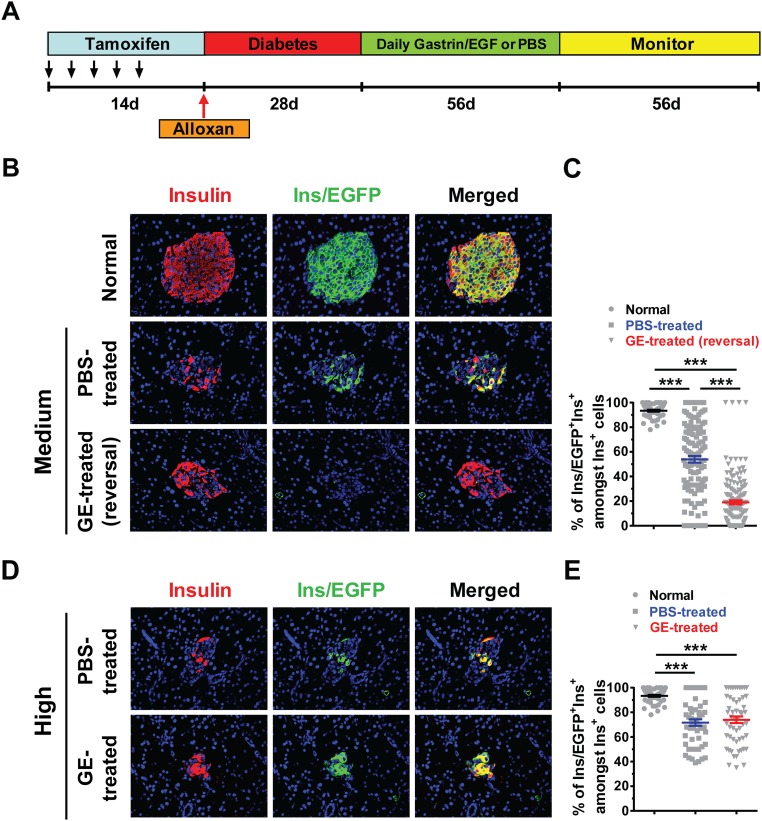Fig. S2.
Long-term administration of low-dose GE augments both β-cell neogenesis and replication in diabetic mice with medium, but not high, hyperglycemia. The 8-wk-old female Ins1CreERTR26mT/mG mice were first given i.p. injection of TM every 2 d over a 2-wk period to induce EGFP expression and label the preexisting β cells. Thereafter, mice were induced to develop diabetes with Alloxan, and mice with medium or high hyperglycemia were treated with GE or PBS control. At the end of the experiments, the pancreases were harvested and stained for Insulin and EGFP, and merged staining was also shown. Nuclei were labeled by DAPI. The percentage of EGFP+Ins+ cells among total Insulin+ cells was calculated. Normal nondiabetic mice were used as a control for checking EGFP labeling efficiency. (A) Experimental scheme. (B) The islets in mice with normal or medium hyperglycemia after PBS or GE treatment were stained for Insulin (red), EGFP (green), or merged colors. (C) The percentage of Ins/EGFP+Ins+ cells among Insulin+ cells in islets of mice in C is shown (mean ± SEM, n = 4). (D) Representative staining pattern of islets in mice with high hyperglycemia after PBS or GE treatment. (E) The percentage of Ins/EGFP+Ins+ cells among Insulin+ cells in the islets of mice in D is shown (mean ± SEM, n = 4). ***P < 0.001. (Original magnification: B, D, 400×.)

